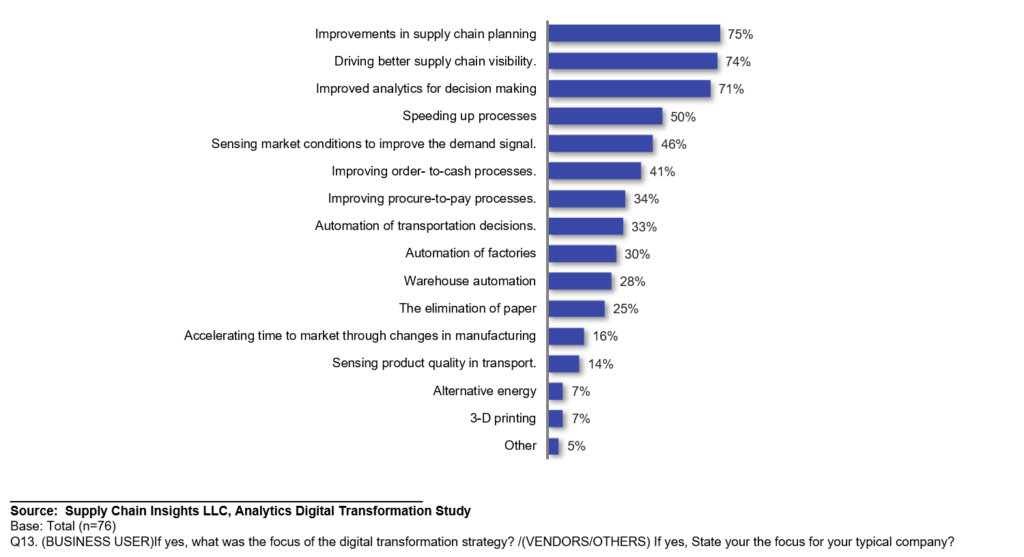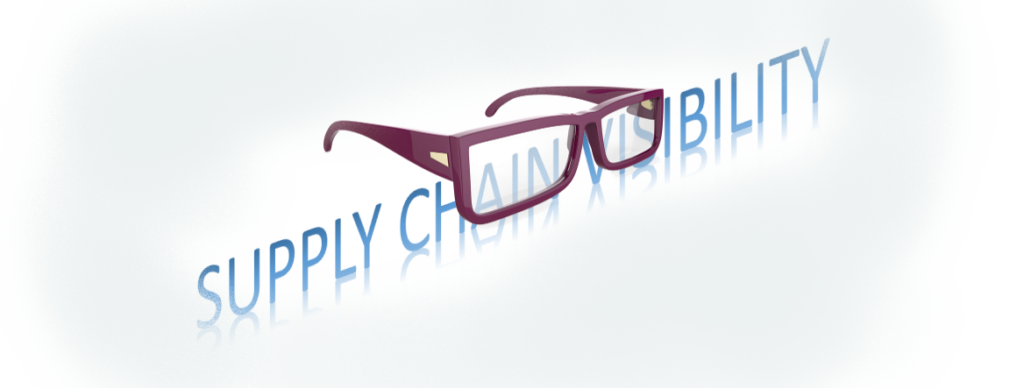In military operations, there is a notion called “the fog of war.” The concept is often traced back to Carl von Clausewitz, a Prussian general and military theorist, who wrote, “War is the realm of uncertainty; three quarters of the factors on which action in war is based are wrapped in a fog of greater or lesser uncertainty. A sensitive and discriminating judgment is called for; a skilled intelligence to scent out the truth.” As supply chains have grown more complex, the same thing could be written about many of them. The foggy environment in which many supply chain professionals labor stems from a lack of visibility deep into supply chain operations. In military circles, professionals try to overcome the fog of war by increasing their situational awareness. I like that term. It connotes the desire to have a better understanding of all the factors that could impact current operations. Supply chain professionals, like military professionals, often find situational awareness an elusive goal.
The Situational Awareness Imperative
For years, Lora Cecere (@lcecere), founder and CEO of Supply Chain Insights, has insisted that, at the very least, supply chain visibility should include visibility from your suppliers’ suppliers to your customers’ customers. Over a decade ago, Cecere wrote, “As we enter the world where data is more available from trading partners, we can navigate across the supply chain into customer’s customers and supplier’s suppliers. In this world of big data, relational databases and desktop applications — spreadsheets, statistical packages and reporting — are insufficient. Instead, it requires the use of parallel software running on tens, hundreds or even thousands of servers. It is the world of terabytes, exabytes and zettabytes of data.”[1] As I note below, Cecere is dismayed about the lack of progress that has been made in the area of supply chain visibility over the last ten years.
When supply chain professionals talk about improving supply chain visibility, they are often myopic in their vision of what data they need. The days of simply tracking resources and parts are long past. Companies need to open their lens so that they have both improved visibility and transparency. Bindiya Vakil, cofounder and CEO of Resilinc, notes, “Virtually all supply chains have a dark side. They’re often exploitative and unsustainable, particularly to the poor or desperate. … The days of plausible deniability are over.”[2] That’s why Sush Koka (@sushkoka), Director of Global Product Marketing at Basware, insists companies need “the full story” (i.e., better situational awareness). She writes, “For strategic decision making, especially during these turbulent times, it is critical to see the full ‘data story’ across the entire supply chain covering all an organization’s processes, suppliers and spend.”[3]
The Elusive Search for the Full Story
As I noted above, Cecere is dismayed at the lack of progress that has been made in the area of supply chain visibility over the past decade. She writes, “The word of the day is visibility, yet this is the nut that companies … cannot seem to crack. The reason? All technologists today tout a visibility solution, but visibility is not visibility. The solution remains elusive.”[3] If you are wondering what the heck she means by the phrase “visibility is not visibility,” she explains, “There are many flavors and variants on the need state, yet most projects attempt to solve the problem with a generic visibility approach. As a result, most projects are not clear in scope, with the implementation of visibility as a ‘functional extension to existing process’ lacking a holistic outside-in approach/strategy to sense, respond, and act.” To demonstrate what she means when she talks about “many flavors and variants” of supply chain visibility, she offers the following chart showing that companies are concerned about planning, visibility, and decision-making as some of their top priorities.[4]

Vakil would undoubtedly point out that improved visibility into the “dark side of the supply” chain didn’t make that chart. Such omissions are one reason why Cecere can confidently assert, “Visibility means many things to different people.”
Improving Supply Chain Situational Awareness
Sean Thompson (@seantho), Executive Vice President of network and ecosystem for SAP Procurement Solutions, insists one of the problems preventing organizations from cutting through the fog of business is the whole notion of a “linear supply chain.” He asserts, “Organizations must innovate beyond the traditional, linear supply chain model and lean into a dynamic, collaborative supply network. Unlike traditional supply chains, supply networks shift away from singular, point-to-point processes to a many-to-many structure that enables 360-degree visibility.”[5] Cecere adds, “The goal for all should start with a clear definition of the term ‘visibility’ and the process definition of what capabilities are required to drive success. Stop deploying ‘visibility solutions’ for ‘visibility’s sake’ and build a comprehensive plan.” Or, as Koka puts it, “With the full data story at your fingertips, you’re able to strategically zig and zag to protect your supply chain. … To protect your supply chain and shape it for ultimate growth, you need the entire data story and you need an (automated) way to analyze it from cover to cover.” Cecere suggests taking five steps to create the kind of visibility plan fit for the Digital Age. They are:
Step 1. Adopt Authoritative Identifiers. “Cars have VIN numbers, and a candy bar has a UPC. Your wallet has a social security or a passport number. These are authoritative identifiers. Today, there are no authoritative identifiers to track and trace for containers, warehouse locations, trucks or manufacturing plants. Close this gap. Actively adopt the GS-1 and ISO-8000 standards and move aggressively on building authoritative identifiers in visibility programs.”
Step 2. Maximize the Use of Existing Trading Partner Solutions. “Survey existing suppliers, third-party logistics providers and customers. Build a map of required interoperability requirements. To move forward educate the team on the differences between integration and interoperability. Use noSQL to build a unified data model across disparate data systems using a rules-based ontology. To accomplish this goal, partner with companies like Aera Technology, Enterra Solutions® or UCBOS.”
Step 3. Embrace Disparate Data. “Map the gaps in performance and identify all of the potential data that can help you close the gap. Build solutions to embrace unstructured, streaming and image data. Combine these new forms of data with transactional capabilities to drive new outcomes.”
Step 4. Build a Digital Twin Using Planning Master Data. “Drive plans based on actual lead-times, conversion rates and cycle times. Actively design the network and measure performance to design capabilities. Constantly tweak and change the design based on network shifts.”
Step 5. Design an Over-Arching Strategy and Building Blocks. “Don’t … assume that you know the definition and requirements of visibility. Build a multi-year visibility strategy. Use it to educate your organization.”
Concluding Thoughts
Analysts from River Logic note, “The term supply chain visibility relates to knowing what’s going on in your supply chain. Despite its deceptively simple meaning, it’s not something that’s easily achieved.”[6] They go on to note, “Over the last few years, numerous organizations have experienced unplanned supply chain disruptions caused by abnormal weather events, natural disasters, factory fires and other forms of supply chain disruption. When these events are analyzed, it’s not unusual to discover that companies were caught off guard because of poor supply chain visibility. In some instances, companies didn’t know where suppliers and sub-suppliers were located, while in others they were unaware of critical dependencies in their extended supply chains.” In other words, they lacked the situational awareness necessary to cut through the fog of business. Cecere asserts gaps exist in supplier visibility, manufacturing visibility, logistics visibility, and enterprise visibility. She concludes, “Despite major investments, the gaps are large. We are making slow progress on transportation visibility, but not supplier visibility. Too few companies have a holistic approach to embrace the plan, make, source, and deliver together.”
Footnotes
[1] Lora Cecere, “User in the Era: Big Data Supply Chains,” Supply Chain Shaman, 1 June 2011.
[2] Bindiya Vakil, “Responsible Supply Chains: ‘Tier 1’ Visibility No Longer Cuts It,” SupplyChainBrain, 16 September 2021.
[3] Sush Koka, “Why Supply Chains Need the Full Story to Grow Amid Uncertainty,” Supply & Demand Chain Executive, 13 January 2021.
[4] Lora Cecere, “Supply Visibility: More Important Than Ever. Yet Elusive.” Supply Chain Shaman, 27 September 2021.
[5] Sean Thompson, “Improve visibility by going beyond the linear supply chain model,” Supply Chain Dive, 3 September 2020.
[6] Staff, “What Is Supply Chain Visibility and Why Is It Important?” River Logic, 8 June 2020.





